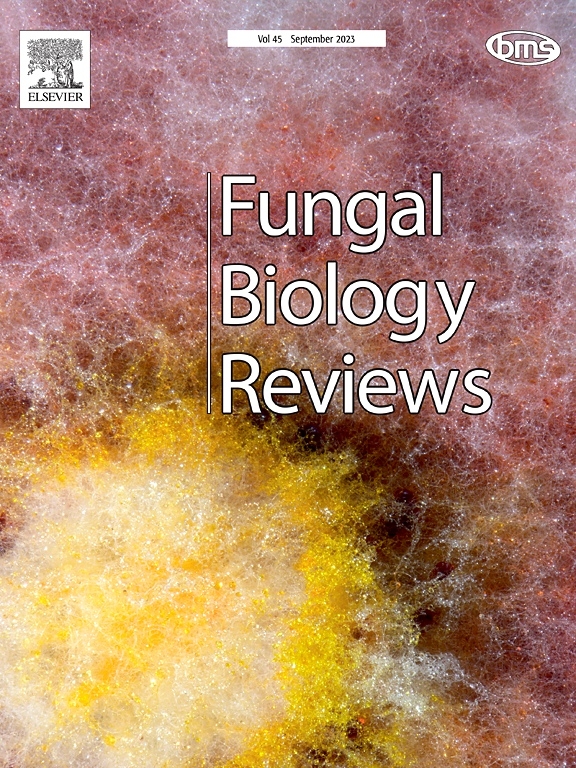它可能是哪种真菌?呼吁真菌学家进行DNA条形码合作练习
IF 4.6
2区 生物学
Q1 MYCOLOGY
引用次数: 0
摘要
这项合作倡议呼吁真菌学家、微生物学家和生物多样性专家参与社区活动,并使用一套全面的初级和次级DNA条形码序列对45种常见真菌进行分子鉴定。该计划着眼于分类丰富的子囊菌属,如曲霉、青霉、镰刀菌、交替菌、木霉和其他一些属,旨在审查真菌学家之间的共识,揭示分子鉴定方法,并为未来的专家制定标准化的培训方法。参与者被邀请贡献分类学评估,与合作作者的机会为那些分析至少15或更多的45种提供的种型。该计划寻求每个菌株至少100个鉴定,促进协作社区的努力和测试,以建立一个网络平台或由专家社区验证真菌DNA条形码结果的自动化管道。利用从塑料废物样品中分离的45种非冗余真菌种型,该练习回顾了DNA条形码技术在真菌学中的现状,并为未来的应用和培训奠定了基础。本文章由计算机程序翻译,如有差异,请以英文原文为准。

Which fungus it might be? Calling for a collaborative DNA barcoding exercise for mycologists
This collaborative initiative calls upon mycologists, microbiologists, and biodiversity experts to participate in the community exercise and molecularly identify a collection of 45 common fungi using a comprehensive set of primary and secondary DNA barcoding sequences. Focusing on taxonomically enriched genera of Ascomycota such as Aspergillus, Penicillium, Fusarium sensu lato, Alternaria, Trichoderma, and a few others, this initiative aims to review the agreement among the mycologists, uncovering molecular identification approaches, and standardizing training methodologies for future experts. Participants are invited to contribute taxonomic assessments, with co-authorship opportunities for those analyzing at least 15 or more of the 45 phylotypes provided. The initiative seeks a minimum of one hundred identifications per strain, fostering a collaborative community effort and testing for the need to the establishment of a web platform or an automated pipeline for the verification of fungal DNA barcoding results by the expert community. Utilizing 45 nonredundant phylotypes of fungi isolated from plastic waste samples, the exercise reviews the current state of DNA barcoding technology in mycology and sets groundwork for future applications and trainings.
求助全文
通过发布文献求助,成功后即可免费获取论文全文。
去求助
来源期刊

Fungal Biology Reviews
MYCOLOGY-
CiteScore
10.60
自引率
0.00%
发文量
36
期刊介绍:
Fungal Biology Reviews is an international reviews journal, owned by the British Mycological Society. Its objective is to provide a forum for high quality review articles within fungal biology. It covers all fields of fungal biology, whether fundamental or applied, including fungal diversity, ecology, evolution, physiology and ecophysiology, biochemistry, genetics and molecular biology, cell biology, interactions (symbiosis, pathogenesis etc), environmental aspects, biotechnology and taxonomy. It considers aspects of all organisms historically or recently recognized as fungi, including lichen-fungi, microsporidia, oomycetes, slime moulds, stramenopiles, and yeasts.
 求助内容:
求助内容: 应助结果提醒方式:
应助结果提醒方式:


